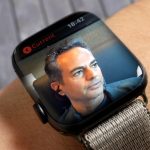Description
We realize the with the advancement and pervasiveness of mobile devices and their auxiliary wearable sensors (e.g., Apple Watch, Fitbit), it is now possible to continuously collect data from individuals. Therefore, there is an unprecedented opportunity to augmenting a patient’s clinical visits with these longitudinal datasets, to observe the patient’s overall health state.
Working with medical researchers in several different disease areas, we have observed how these type of longitudinal datasets can provide them with unique insight in predicting the progress of disease that have not been possible before by just relying on in-clinic observations. For example, for cancer patients, in-clinic observations could not predict the rate of adverse events, such as unexpected hospitalization and unplanned trips to the day hospital for hydration. Instead, continuous monitoring of the patient’s calorie expenditure by an inexpensive wearable during waking hours can help predict these serious adverse events. Another example, is the effective diagnosis of atrial fibrillation (AF), the cause of a third of all strokes, our second study demonstrated the unique capabilities to expand the diagnostic scope, allowing patients to nimbly monitor for arrhythmia instantly on demand and outside of a traditional healthcare setting by using a mobile phone enabled ECG recorder. Yet another example from a study focusing on early identification of impaired neuromotor control in infancy, demonstrated that a limited controlled observation of 5-10 minutes does not accurately describe the full behavioral repertoire and movement characteristics of an infant. Instead, full-day in-home monitoring of infant leg movements with relatively inexpensive wearable sensors has the potential to improve the prediction of neuromotor outcomes.

Encouraged by preliminary studies, we envision a Spatiotemporal Health Application Research Platform (SHARP) as an end-to-end system that enables medical researchers to rapidly assimilate and interpret wearable data early in their observational studies. The challenges are unlike those in-clinic data collection: 1) there is no expert present during the data collection, 2) the sensor hardware and software are generic and are not necessarily developed for the specific vital being monitored, and 3) the monitoring is always-on and active.
Therefore, SHARP will be able to interpret: a) noisy and irregular data, b) data collected from a single sensor (as opposed to multiple sensors per individual), and c) streaming data arriving in real-time. Meanwhile, for the toolkit to be adopted by healthcare practitioners, it should: i) preserve the privacy of confidential data, ii) have friendly and easy to learn interfaces to upload data, tune parameters, and verify results, iii) be validated, and iv) easily be extended/reconfigured with new types of devices/applications.
We have started implementing SHARP in our health research projects. For example, with ATOM-HP (Analytical Technologies to Objectively Measure Human Performance) we have built an end-to-end system that enables us to collect health sensor data (Microsoft Band) and mobility data (Microsoft Kinect), biometrics, patient reported outcomes and other health data leveraging our past experience with similar health research system. The platform allows us to acquire, process, analyze and model health and human performance data.

Datasets
ATOM-HP clinical dataset
- Microsoft band hourly measurements for step count, heart rate, calories, and other related metrics for a period of 60d
- Skeleton data recorded using the Microsoft Kinect One sensor for two clinical tasks
- Demographics and clinical patient data
- Patient recorded outcomes
ATOM-HP military dataset
- Microsoft band hourly measurements for step count, heart rate, calories, and other related metrics for a period of 2d
- Skeleton data recorded using the Microsoft Kinect One sensor for a walking task
- Face tracking data recorded using the Microsoft Kinect One sensor for a reading task
- Demographics and clinical patient data
- Patient recorded outcomes
Blood management dataset
- Blood management data collected from the electronic medical record of the Keck Medical Center of USC
- From August 2014 to October 2016
- Covering 24,107 surgical cases
UNOS dataset
- Database from Organ Procurement and Transplantation Network



